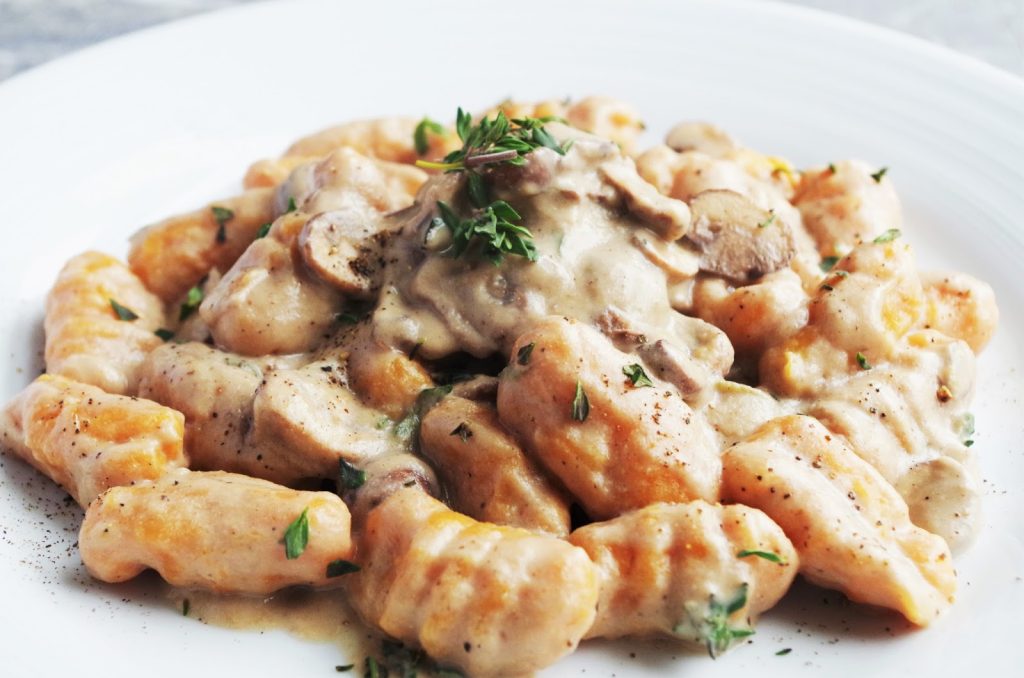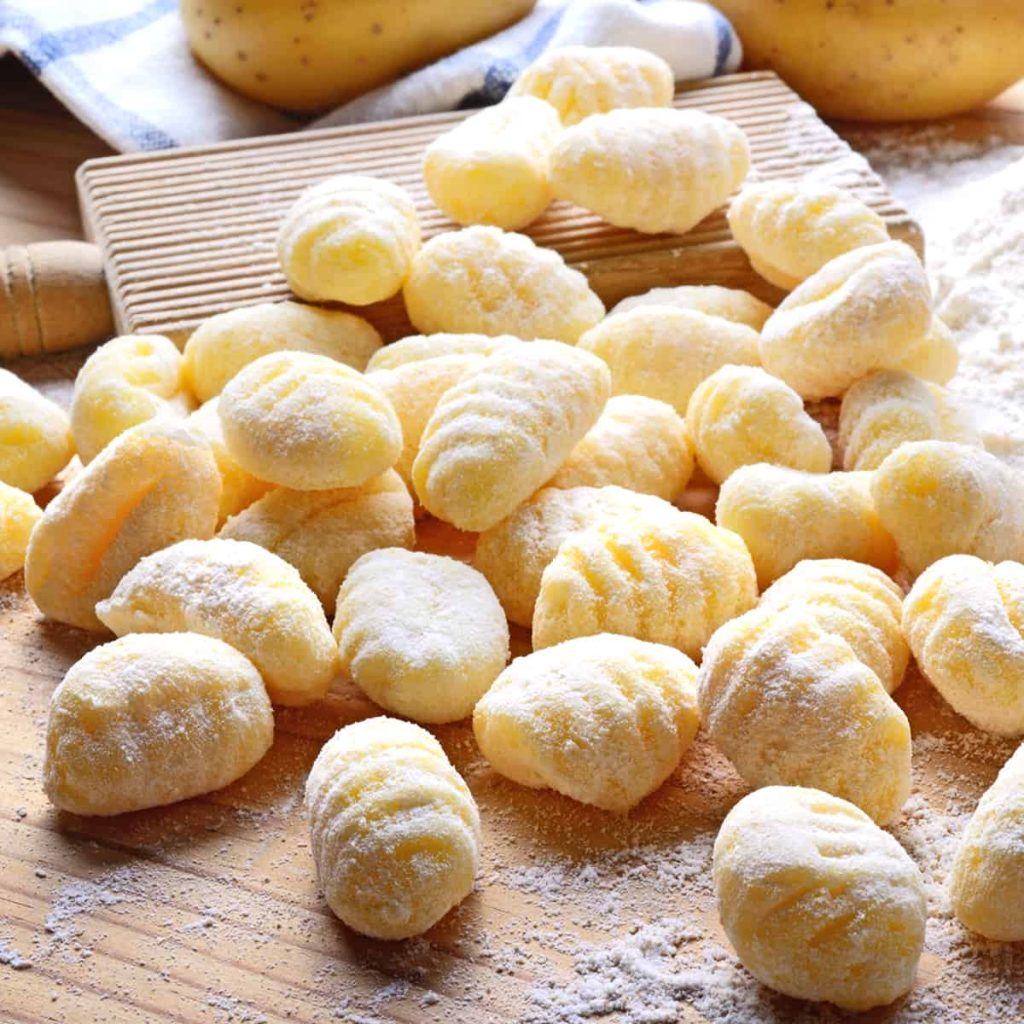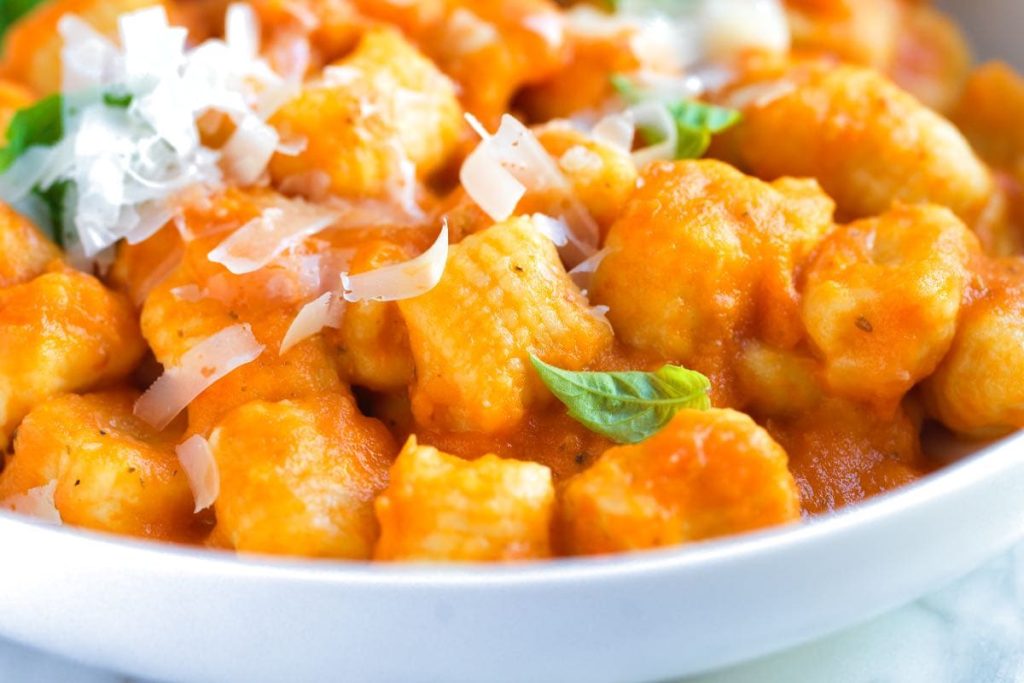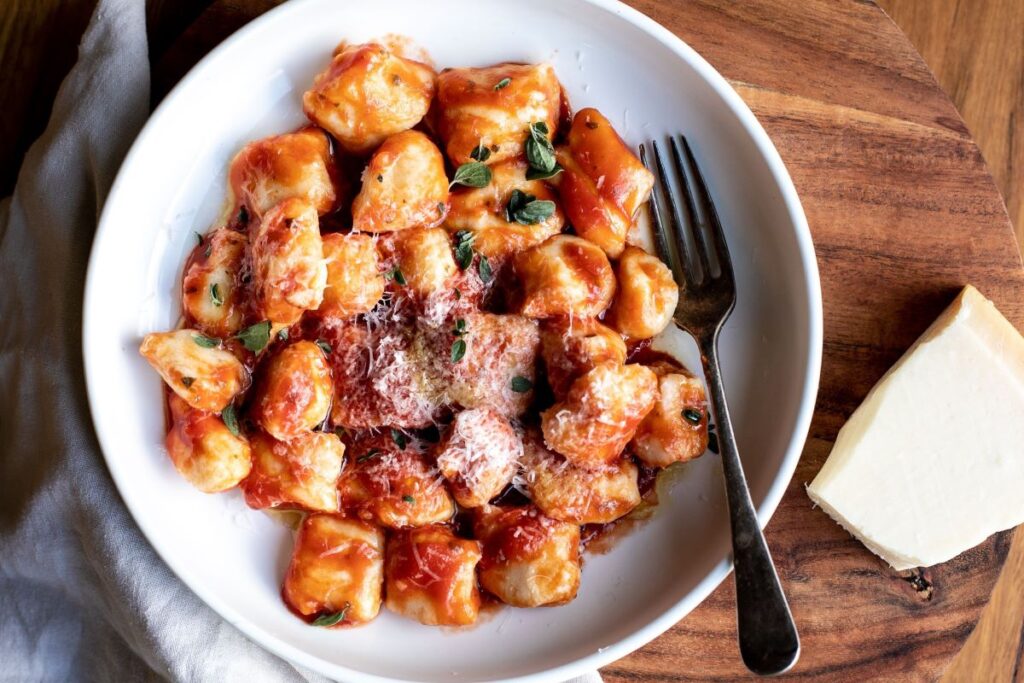Have you ever ever sunk your fork right into a dish of do-it-yourself gnocchi, so delicate they virtually soften in your mouth? These little potato pillows are some of the beloved treasures of Italian delicacies, a dish that tells tales of household and centuries-old traditions in each chew.
One factor we’ve realized in our Roman cooking lessons is that good gnocchi requires little secrets and techniques handed down from era to era. On this article, we’ll take you on a flavorful journey to find genuine Italian gnocchi. From choosing the right potatoes to discovering the best sauce pairing, right here’s every little thing you want with the intention to convey a bit of Italy to your desk!
What’s Gnocchi
(Unique pronunciation: “nyoh-kee”, the place the “gn” is pronounced as a single sound, not separating the consonants as English audio system typically do.)
Gnocchi are delicate little morsels of potato and flour, some of the beloved dishes in Italian delicacies. There’s no household Sunday dinner or Thursday at Roman trattorias (therefore the well-known saying “Giovedì gnocchi!”, which suggests “Thursday gnocchi!”) that doesn’t characteristic these scrumptious pillows served steaming scorching on the desk!
Apparently, gnocchi existed lengthy earlier than potatoes even reached Europe! Through the Renaissance, their ancestors had been crafted from bread, flour, and boiling water. It wasn’t till the 1700s, when potatoes grew to become widespread to fight famine, that potatoes grew to become the star ingredient we love right now.
Every Italian area has its personal model:
- In northern Italy, gnocchi are served merely with butter and sage.
- In Rome, Thursday means hearty gnocchi with meat sauce.
- In Naples, “gnocchi alla sorrentina” is baked with tomato sauce and effervescent mozzarella.
- Tuscany affords “gnudi,” delicate ricotta and spinach cousins of conventional gnocchi.
- Alto Adige serves up hearty “canederli,” bread-based gnocchi spiced with herbs and speck.
In our cooking lessons in Rome, we at all times see the amazement in our members’ eyes after they really feel the right consistency of the dough between their fingers. “It’s so easy!” they exclaim, stunned. And that’s exactly the magic of gnocchi: just a few easy substances that, with the appropriate strategies, remodel into one thing extraordinary.
Gnocchi vs. Pasta: What’s the distinction?.

“So, are gnocchi a sort of pasta?”
This is without doubt one of the most frequent questions we obtain throughout our cooking lessons, and our reply is at all times: not precisely!
Though each are stars of the Italian desk, gnocchi and pasta are two utterly completely different creations. Pasta is especially constituted of durum wheat flour and water (and generally eggs, within the case of tagliatelle, fettuccine, tortellini, ravioli, and lots of different kinds of contemporary Italian pasta).
Gnocchi, alternatively, are like delicate cushions the place potato is the true star of the present, with flour merely enjoying a supporting position. This distinction is straight away obvious in your mouth: pasta maintains a pleasing “al dente” consistency, whereas gnocchi gently soften in your palate, virtually like a cloud.
Their habits within the kitchen additionally reveals their variations:
- Pasta step by step absorbs sauces on its floor
- Gnocchi, being extra porous, embrace the sauce like a sponge
- Pasta cooks in 8-12 minutes, whereas gnocchi “inform you” after they’re prepared by floating to the floor in simply 2 minutes!
Throughout our cooking classes, we love displaying how these two pillars of Italian delicacies symbolize two completely different philosophies.
Wish to expertise each of those culinary treasures? In our personal Cooking With Nonna course, our lovable Roman grandmother will take you by the hand and present you how one can create these dishes precisely as they’ve been made in Italian houses for generations.
Step-by-step information to creating conventional Gnocchi
There’s one thing magical about watching a pile of potatoes remodel into scrumptious gnocchi. It’s a course of that captures all of your senses: the aroma of freshly cooked potatoes, the texture of flour between your fingers, the sound of dough being labored on a picket board.
Get able to get your arms soiled with our step-by-step information – we promise, the outcome can be price each little bit of flour scattered round your kitchen!
Substances (for 4 individuals with Italian appetites):
- 1 kg of starchy potatoes (the older ones, not younger potatoes!)
- 250-300 g of kind 00 flour
- 1 medium egg (optionally available, however helps bind the dough)
- A pinch of salt
- As a lot love as you’ll be able to put into it!
The method (or as we are saying, “the magic”):
- The potatoes: the guts and soul of gnocchi: Boil potatoes complete with skins on in chilly water. After about 30-40 minutes, if a fork goes by means of them simply, they’re prepared!
- The mashing: Right here’s a secret cooking tip: mash your potatoes whereas they’re nonetheless heat (not scorching). Use a potato ricer instantly onto a flippantly floured picket board—the ricer conveniently leaves the skins behind, saving you time!
- The dough: As soon as the potatoes have cooled barely, kind a properly (like a mini volcano) and add flour, salt, and egg within the heart. Knead gently, much less is extra! Cease as quickly as your dough is delicate, fluffy, and never sticky. Keep in mind, we’re making clouds, not bread!
- The shaping: essentially the most enjoyable half! Minimize small sections and roll them into ropes about 2cm thick. Then reduce into small 2cm pillows. Roll every gnocchi gently on a fork or gnocchi board. These little grooves aren’t simply ornamental; they’re sauce magnets!
- The affected person wait: Unfold gnocchi on a well-floured tray, cautious to not overcrowd them (they love sticking collectively!). Cowl with a clear towel till cooking time.
Should you’re considering “this appears difficult!”, don’t fear. In our Master Parmigiana and Gnocchi cooking class, we make every little thing accessible even to absolute rookies. Our skilled arms will information yours, and earlier than you realize it, you’ll be creating gnocchi like a real Italian!
Choosing the proper potatoes for Gnocchi dough

If there’s one factor all Italian cooks agree on, it’s this: the key to good gnocchi begins with selecting the best potatoes. We’re not speaking a couple of easy desire… it’s virtually an unwritten regulation of Italian delicacies!
However which potatoes must you select amongst all these varieties you discover on the grocery store? Allow us to reveal the key.
The golden rule: “outdated and starchy”
In Italian grandmothers’ kitchens, potatoes which were saved for some time (what we name “outdated potatoes”) are at all times most popular. Over time, they naturally lose moisture and focus starch, creating that good floury consistency for gnocchi.
These potatoes, when cooked and mashed, aren’t moist or sticky. They crumble simply, virtually as in the event that they wished to rework into gnocchi all by themselves! It’s a bit like selecting bananas for banana bread: they need to be ripe, not freshly harvested.
Find out how to acknowledge a “gnocchi potato”
Whenever you’re on the market, search for potatoes that:
- Have barely thick and tough pores and skin (not easy and glossy like new ones)
- Are white or yellow-fleshed however by no means waxy
- Really feel heavy for his or her dimension
- Don’t have sprouts (it means the starch is popping into sugar!)
In Italy, varieties like Majestic, Kennebec, or Désirée are good. Should you can’t discover these, search for potatoes offered as “starchy” or “baking potatoes.”
A trick we frequently share in our cooking lessons is to decide on potatoes that really feel dense and compact to the contact. Lighter, spongier potatoes are typically extra watery, which suggests you’ll want so as to add extra flour to the dough, and that results in heavy relatively than mild, fluffy gnocchi.
Keep in mind: watery potatoes = extra flour wanted = heavy gnocchi.
Dry potatoes = much less flour = cloud-like gnocchi.
Typically the distinction between divine gnocchi and “chewing gum” lies exactly within the potato you select at the start!
The position of flour: how a lot is an excessive amount of
Flour in gnocchi is sort of a visitor at a celebration: important, however an excessive amount of can spoil the enjoyable! Discovering the appropriate steadiness is an artwork that each Italian chef masters over time.
The “much less is extra” rule
After we put together gnocchi in our cooking lessons in Rome, we at all times see the identical mistake: on the first sensation of sticky dough, members begin including flour… after which extra flour… and extra! Earlier than we all know it, the dough resembles bread greater than gnocchi.
The reality? Good gnocchi include the minimal quantity of flour doable to carry the dough collectively. Take into consideration 250-300 grams of flour per kilogram of potatoes – however that is only a guideline, not a strict rule.
The alerts to hear for
How have you learnt if you’ve added sufficient flour? The right dough “speaks” to you on this approach:
- It’s delicate however doesn’t desperately persist with your fingers
- It maintains its form if you roll it
- It’s not elastic like pizza or bread dough
- It has a velvety consistency that nearly invitations you to sink your fingers into it
If the dough appears too moist, the primary intuition is so as to add flour. Resist! As an alternative, attempt to gently work the dough on a well-floured floor. Usually the moisture balances out with a little bit persistence.
Grandma’s secret
One of many grandmothers who collaborates with us at In Rome Cooking has a trick we like to share: “Take a look at your arms, not the recipe!” If the dough not sticks to your arms however stays delicate to the contact, you’ve reached perfection, no matter how a lot flour you’ve used.
And should you actually can’t get the appropriate consistency? A crushed egg within the dough can work magic, binding the parts with out requiring an excessive amount of further flour.
In our Cook an Italian Sunday Lunch cooking class, members experiment with completely different consistencies, studying to acknowledge by contact when the dough is prepared. There’s no extra satisfying feeling than seeing their smiles after they lastly “get” that good consistency!
Traditional Gnocchi sauces: what pairs finest

Gnocchi are like small white canvases able to welcome the colours and flavors of Italian delicacies. Their delicate texture and delicate style make them good for pairings starting from the best to essentially the most elaborate.
The classics that heat the guts
Tomato and basil sauce
There’s one thing magical within the simplicity of ripe tomatoes, garlic, olive oil, and contemporary basil leaves. This pairing, maybe essentially the most iconic, permits gnocchi to shine with out being overpowered. In Naples, this sauce turns into the bottom for the beloved “gnocchi alla sorrentina”, the place gnocchi are first dressed with the sauce, then coated with mozzarella and baked till they create that impossible to resist crust that drives everybody loopy!
Butter and sage
Typically the best issues are essentially the most elegant. In northern Italy, particularly in Lombardy and Piedmont, gnocchi discover their paradise in a pan the place butter melts gently till it turns into barely golden, infusing with the aroma of crispy sage leaves. A beneficiant sprinkle of parmesan completes this symphony of flavors. Through the chilly winter months, there’s no extra comforting consolation meals!
Ragù
In Italian houses, Sunday is sacred: it’s the day of slow-cooking ragù that simmers for hours, filling the air with irresistible aromas. This wealthy and substantial sauce, whether or not it’s traditional Bolognese or the Neapolitan variant with items of meat, clings to gnocchi creating an ideal marriage of textures. In Rome, that is the standard pairing for Thursday, gnocchi day par excellence!
Inventive however conventional pairings
Quattro formaggi sauce
Gnocchi are extremely scrumptious when wrapped in a creamy cheese sauce. A mix of gorgonzola, which melts right into a spicy cream, intensely fragrant fontina, parmesan that provides depth, and a contact of mascarpone for steadiness, creates a dressing that’s pure poetry. Add chopped walnuts for a distinction in textures and also you’ll have gorgonzola and walnut gnocchi, an much more scrumptious variant.
Pesto alla genovese
The extreme aroma of contemporary basil pounded with pine nuts, garlic, parmesan, and further virgin olive oil is one other traditional that enhances the softness of gnocchi. In Liguria, this pairing is usually enriched with inexperienced beans and diced potatoes, a celebration of textures and flavors that inform the story of Italian spring in a single chew.
Seasonal sauces
One of many joys of Italian delicacies is following the rhythm of the seasons. In autumn, gnocchi costume up with porcini mushrooms and a contact of crumbled sausage within the traditional boscaiola sauce. In spring, they’re coloured inexperienced with contemporary asparagus and peas. In summer season, a lightweight cream of zucchini with zucchini flowers turns into their good accompaniment.
No matter dressing you select, keep in mind the recommendation we at all times give in our cooking classes: the sauce ought to have a consistency that enables it to cling to the gnocchi, not too liquid to slide away, nor too dense to overwhelm them. It needs to be like an ideal embrace… neither too tight nor too free!

